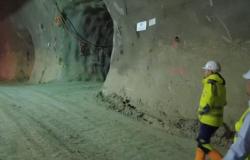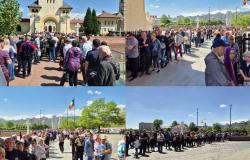There are more than 4500 satellites around the globe. More precisely, at the end of 2021 there were 4,550. More than 70 countries own telecommunications satellites, and Romania is not among them. Their list can be browsed here:
Among the nations that have their own satellites around the earth, at the top of the ranking we find the United States, which owns more than half of the satellites of the entire planet (over 2800). China, the technological power with the most significant growth in recent years, is in second place with 467 satellites, followed by the UK (349 satellites) and Russia (168 satellites). There are not a few states in the European Union that have their own satellites: Germany has 47, Luxembourg 40, France 31, Spain 24, Italy 21, the Netherlands 16, Finland 15, Belgium, Greece and Sweden 5 each, Denmark 4, the Czech Republic 3, Lithuania and Slovenia 2 each, and Austria, Bulgaria, Hungary, Estonia, 1 each. A total of 18 EU nations are in this select club, which also includes countries such as Kazakhstan (6 satellites), Algeria (5 satellites), Morocco and Pakistan (3 satellites each), Azerbaijan, Belarus and Venezuela (2 satellites each), and even Bangladesh, Ecuador, Kuwait, Laos, Sri Lanka, Sudan, Tunisia, Turkmenistan and even Iraq.
More than two-thirds of the launched satellites (more than 3000) are in the so-called “low earth orbit”- low Earth blind (LEO), 565 are in geo-synchronous/geo-stationary orbits – geosynchronous orbit (GSO)/geostationary orbit (GEO), another 139 on the “average earth orbit”- medium Earth orbit (MEO) and only 56 on the “superior elliptical orbit”- highly elliptical orbit (HEO). Among the more than 3000 LEO satellites, we also find those owned by the most important owner of such objects, Elon Musk, who owns the SpaceX Starlink network; among the 565 in GSO/GEO orbits (spinning at Earth’s rate of rotation) are satellites used for terrestrial telecommunications and for observing earth conditions, with the note that GEOs orbit above the equator, making them appear fixed for a terrestrial observatory. Satellites with MEO orbits are intended for navigation coordination (including GPS systems), and those with HEO orbits for satellite radio. Obviously, those orbiting farther from Earth are more expensive, rarer and can do more complex functions.
Two-thirds of satellites (over 63%) are intended for telecommunications, another fifth (22.1%) for “planet observation”, another 7.8% for technological development and only 0.22% for space observation and 2.3% in space science purposes.
A third of the existing satellites were owned by Elon Musk’s company, and other significant numbers belong to various militaries: the Chinese own 129, the Russian 125, the US Air Force 87, and the US National Reconnaissance Office NRO 63.
Source: https://dewesoft.com/blog/every-satellite-orbiting-earth-and-who-owns-them
Now, maybe we remember that our country, Romania, is the 34th largest economy in the world in the ranking drawn up by the World Bank (https://databankfiles.worldbank.org/public/ddpext_download/GDP_PPP.pdf ) and 35th largest economy in the world in the ranking compiled by the IMF (https://www.imf.org/en/Publications/WEO/weo-database/2023/April/weo-report?a=1&c=001,998, &s=NGDPD,PPPGDP,PPPPC,PPPSH,&sy=2020&ey=2028&ssm=0&scsm=1&scc=0&ssd=1&ssc=0&sic=0&sort=country&ds=.&br=1 ). Behind us we find countries like Switzerland, Belgium, Singapore, Norway, Sweden, Austria. Hungary is a long way off (53rd economy in the world), and let’s not talk about Bulgaria (71st economy in the world). Our economy is not only large, but also started to perform well, Romania reaching 40th place in the world, in the World Bank ranking (https://data.worldbank.org/indicator/NY.GDP.PCAP.PP.CD? most_recent_value_desc=true&year_high_desc=true ) according to the global indicator GDP/capita, PPP (at comparable prices), after us coming Portugal (42nd), Turkey (49), Greece (50), Russia (50), Bulgaria 951), etc. and Hungary being immediately in front of us (39th place).
How is it, however, that Romania has such a strong economy and such modest technological performance? Will economic development in the future be increasingly linked to access to and use of modern technologies? And what are they? Well, what we call simple technology today actually hides a complex of knowledge related to applied mathematics, physics, chemistry related to the production of new materials, programming technologies and even applications such as artificial intelligence (AI).
To be able to have a comfortable place in the future world, a nation must be focused on what is called the “knowledge economy”, that is, on the production of technology and its adaptation to the needs of development. As long as you only produce goods and do not produce technology, you are only a second-rate nation. It is in vain that our politicians come up with big words like resilience and development if they do not build an internal capacity to produce modern technologies.
The knowledge economy is not just a fad or a phrase to be bandied about at various silly conferences, it is the very type of economy that the West is moving towards, that is, an economy focused on the “manufacturing” of technology that can provide high added value to society , meaning prosperity, wealth. Unfortunately, in the country of the rail file, the knowledge economy is not a priority, and the index that expresses the adaptation of our economy in this sense, index calculated by the United Nations Development Program (UNDP), last time in 2020, places us on a dishonorable 52nd place worldwide. The value of the national “knowledge economy” indicator for Romania is 48.5 (52nd place worldwide), while other countries in our situation are at the value of 54.3 for Poland (39th place globally) and 53.9 for Hungary ( 41st place in the world). Before us are Serbia, Croatia and Belarus, and behind us Bulgaria (48.3 – 54th place), Ukraine (47.6 – 56th place), Greece (46.8 – 59th place) and Albania (46.5 – place 61). With 43.9, the Republic of Moldova ranks 78th, between Panama and Jordan.
But what is the composite indicator GKI -global knowledge index? It represents a weighted average between the following indicators, which assess quality in the areas below:
- Pre-university education
- Technical and vocational education
- University education
- Research-development-innovation
- Information Technology and Communications (IT&C)
- Economy
- General validation/promotion environment in a country, how to establish the hierarchy of values, more generally.
This is, if you like, the structure of knowledge in a society, broken down into its constituent elements:

Source: https://www.undp.org/sites/g/files/zskgke326/files/publications/UNDP-MBRKnowFoundation-Global-Kowledge-Index-2020-EN.pdf
Here’s what the first part of the world knowledge ranking looks like:
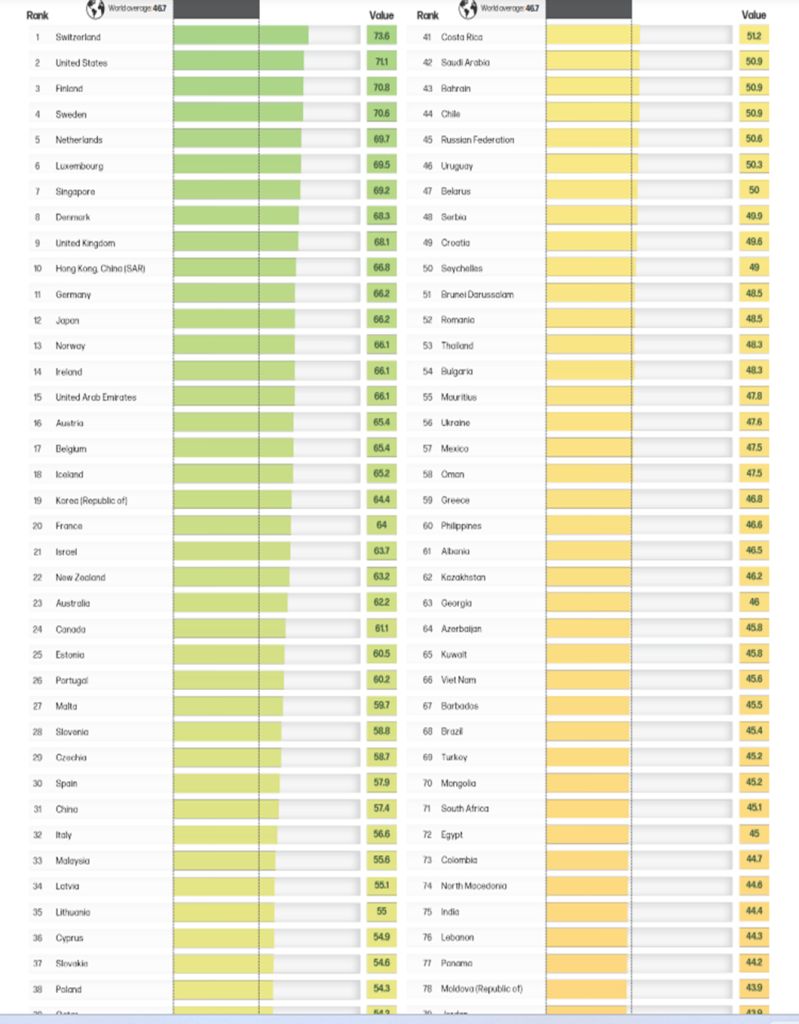
Source: https://www.undp.org/sites/g/files/zskgke326/files/publications/UNDP-MBRKnowFoundation-Global-Kowledge-Index-2020-EN.pdf
Let’s see what our country’s performance looks like, broken down into constituent elements:
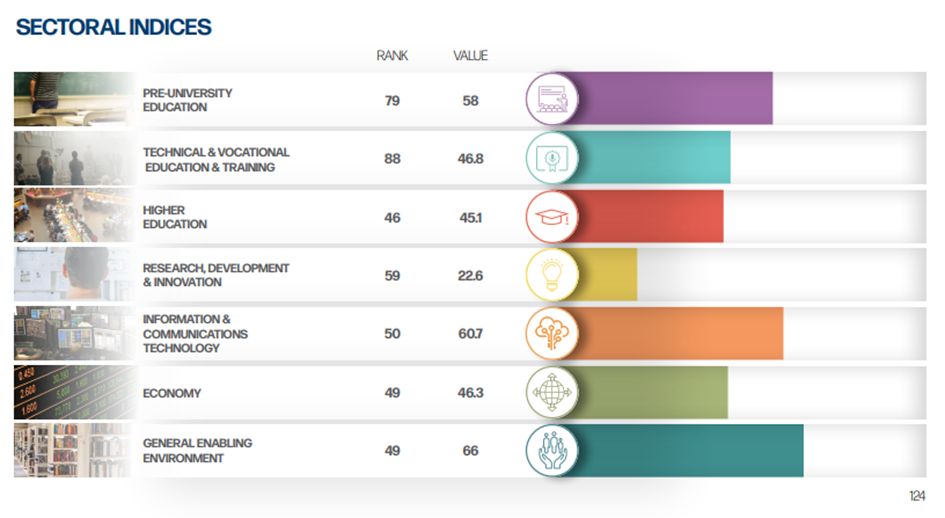
source: https://www.undp.org/sites/g/files/zskgke326/files/publications/UNDP-MBRKnowFoundation-Global-Kowledge-Index-2020-EN.pdf
The best-placed field of education, for us, remains university education (46th place in the world), followed by the performance of the economy and the way values are ranked (49th place in the world), then the level of the IT&C industry (50th place in the world), and the worst is the quality of pre-university education (79th place in the world) and technical and vocational education (80th place in the world). Let’s take a look at our neighbors in Eastern Europe. And let’s start with Poland
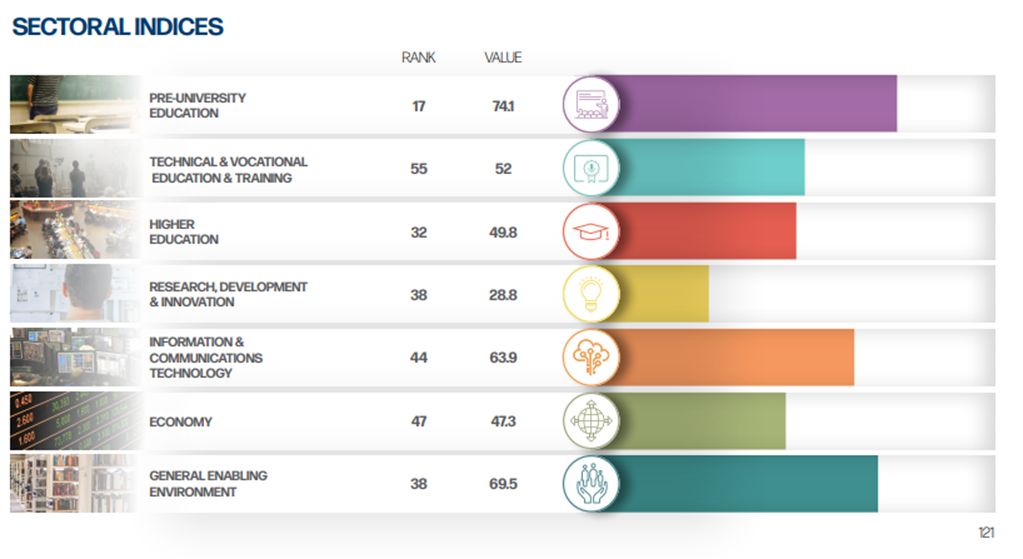
Source: https://www.undp.org/sites/g/files/zskgke326/files/publications/UNDP-MBRKnowFoundation-Global-Kowledge-Index-2020-EN.pdf
Poles excel in pre-university education (17th overall) and have an acceptable level in university education (32nd overall), and in the chapters “research-development-innovation” and how to “hierarchize values” (38th place). They are also the worst in technical and vocational education, but here they are in 55th place, not 88th like we are.
Hungary now:
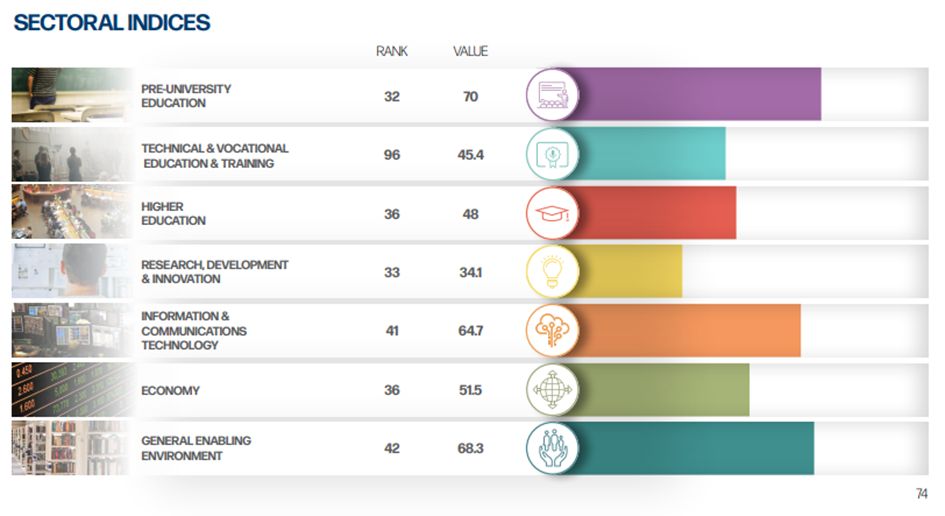
Source: https://www.undp.org/sites/g/files/zskgke326/files/publications/UNDP-MBRKnowFoundation-Global-Kowledge-Index-2020-EN.pdf
Hungarians have the same weakness as us and the Poles: technical and vocational education (96th place in the world), and they, like the Poles, do best in pre-university education (32nd place in the world). They are also doing unexpectedly well in university education (36th place), in research-development-innovation (33rd place) and in the economy (36th place). The Hungarians are not bad either in the IT&C industry, ahead of us by a lot (they are in 41st place), nor in the way of ranking values (42nd place).
Finally, for sentimental but also pragmatic reasons, let’s also see the position of the Republic of Moldova:
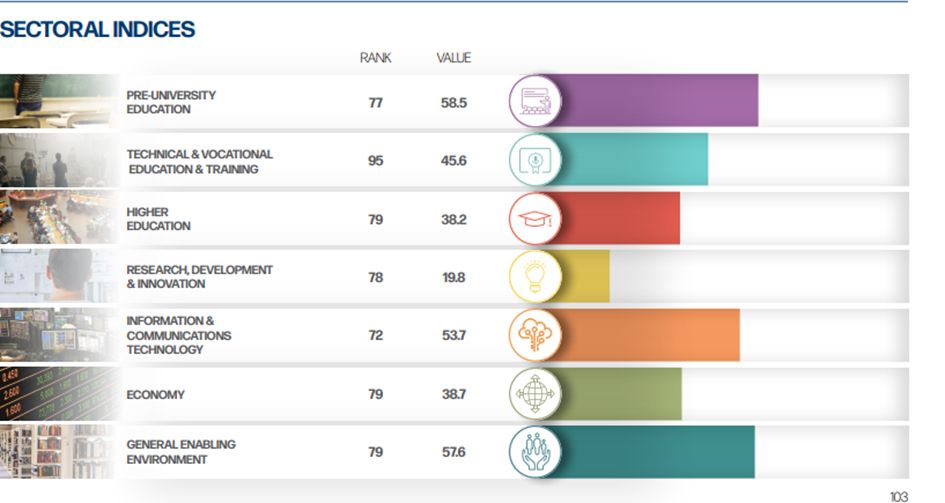
Source: https://www.undp.org/sites/g/files/zskgke326/files/publications/UNDP-MBRKnowFoundation-Global-Kowledge-Index-2020-EN.pdf
The pattern of a catastrophe in technical and vocational education (95th place overall), but also in the general state of the economy (79th place), university education (79th place) and the way of ranking values (79th place) is clearly visible here. Our brothers are not doing too well in research-development-innovation (78th place) nor in pre-university education (77th place). It ranks best in the indicator related to the IT&C industry (72nd place worldwide).
All the vulnerabilities resulting from the rankings above are known and much-discussed things here, but I repeat them because they are relevant to the value we, as a society, give to knowledge and to the way in which Romania prepares or not for the status of “knowledge economy”.
The first thing we have to start from is the fact that we have the highest school dropout rate in the European Union (15.6%):
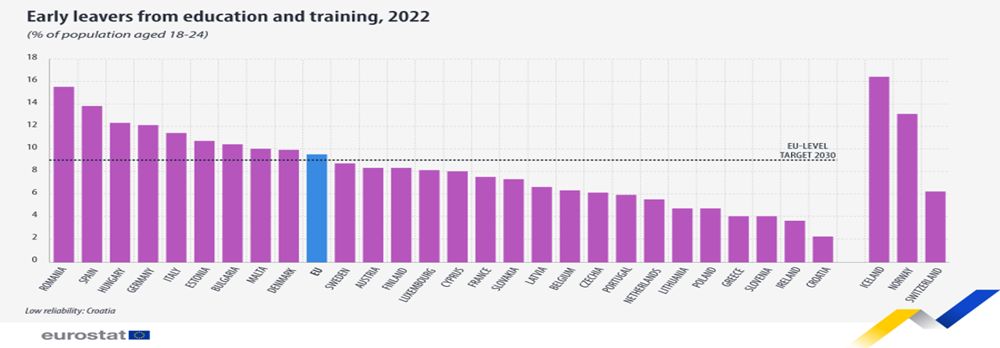
Source: https://ec.europa.eu/eurostat/statistics-explained/index.php?title=Early_leavers_from_education_and_training#:~:text=Across%20EU%20Member%20States%2C%20the,the%20share%20was%20below %205%20%25.
The second major vulnerability: we have the third shortest schooling period for a child entering school today: only 14.2 years on average:
Source: realitateafinanciara.net

Subscribe now to our Telegram channel cotidianul.RO, to always be up to date with the latest news and current information. Be one step ahead of everyone, be the first to hear about important events, analysis and exciting stories.











